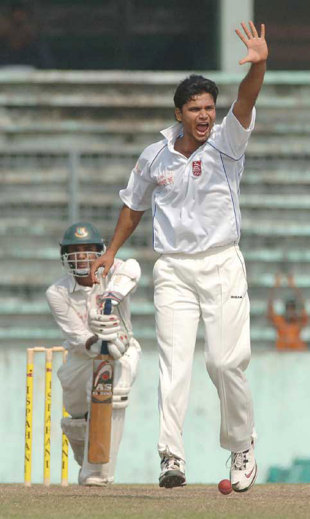A tale of two troubled batting orders
|
|

|
New Zealand will want to iron out their top-order batting woes when they host Bangladesh in Test and ODI series over the next four weeks. The lack of a steady opening Test pair has been a problem that dates back to the early 1990s for New Zealand, and the lack of a consistent combination at the top seems to have now infiltrated the one-day game. The recent tour of South Africa was another disappointing one for New Zealand, and their poor starts were probably the biggest cause for concern.
There were high hopes that the selectors had found a viable opening combination for the Tests in Craig Cumming and Michael Papps. Cumming showed some form - before having plates inserted into his face after being hit by Dale Steyn in the second Test - but the opening stands in the two matches were 16, 12, 26 and 4. This was largely due to Michael Papps, who had a record-breaking domestic season in 2006-07 but was unable to cope with the pace of the South African attack. His failure to reach double figures in the Tests gives the selectors a major headache. Do they persevere with him or bring in yet another opener? Jamie How had a great one-day series at No. 3 in South Africa, and is used to opening. On the other hand the Wellington captain, Matthew Bell, has scored a huge number of domestic runs already this season and has international experience, having appeared in 13 Tests between 1998 and 2001. Whatever the selectors decide, it is important to find a combination and stick with it, as England will provide tougher competition when they arrive in February.
The one-day opening problem has emerged in the wake of the retirements of Stephen Fleming and Nathan Astle, and Lou Vincent and Brendon McCullum have been used since then. In South Africa, the first wicket contributed 12, 9 and 7, but despite the poor return McCullum seems to be maturing in the position; in the Chappell-Hadlee Series he opened with 96. However, having two dashers at the top carries the risk of exposing the middle order too early.
Even if New Zealand can't sort out these issues, they are still favoured to beat their next opponents. Bangladesh's World Cup victory over India was seen as a turning point for them, but they haven't come close to repeating that performance in any form of the game since.
Bangladesh come to New Zealand after a disastrous tour of Sri Lanka, where they were defeated by more than an innings in all three Tests, and failed to win an ODI. The tour opens with a one-day match against Northern Districts in Hamilton on the 16th, and the ODI series will be held between Christmas and New Year. Dunedin's University Oval, which has come in for criticism after a first-class match was completed inside two days there, will host the first Test from January 4 before the series is completed in Wellington.
One major concern for the new coach Jamie Siddons, who was appointed in October, is that the team was dismissed within 50 overs in each match, and it is something he is working on. "If you can stay at the crease long enough, then you'll score a lot of runs, whether it is one-day cricket or five-day cricket," he told tigercricket.com. "So we're going to practise not getting out; we're going to practise still being aggressive cricketers, innovative cricketers, and along the way we'll win some games."
It is in the limited-overs formats that Bangladesh will offer the most resistance, although Mohammad Ashraful's side is relatively inexperienced. "For the one-day series, it's a very young side, very inexperienced, but full of enthusiasm," Ashraful told NZPA. "That can go a long way to winning games."
Despite the inexperience of their opponents, New Zealand will remember Bangladesh's defeat of India, which helped seal a spot in the World Cup Super Eights. However, things in New Zealand are different to the Caribbean and Bangladesh will have to adapt to the conditions to be competitive. They will not be able to rely as much on their spinners, and a great deal of responsibility will be placed on the pace spearhead, Mashrafe Mortaza. Tutored by the West Indian Andy Roberts, Mortaza has played 25 Tests, taking 59 wickets. He has to build on this record during the two Tests in this series. He has 91 wickets at 29.70 in 69 ODIs, with a respectable economy-rate of 4.6, and will be crucial as Bangladesh try to exploit the weaknesses of New Zealand's shaky top order.
Peter Burdon is a freelance writer based in Christchurch
